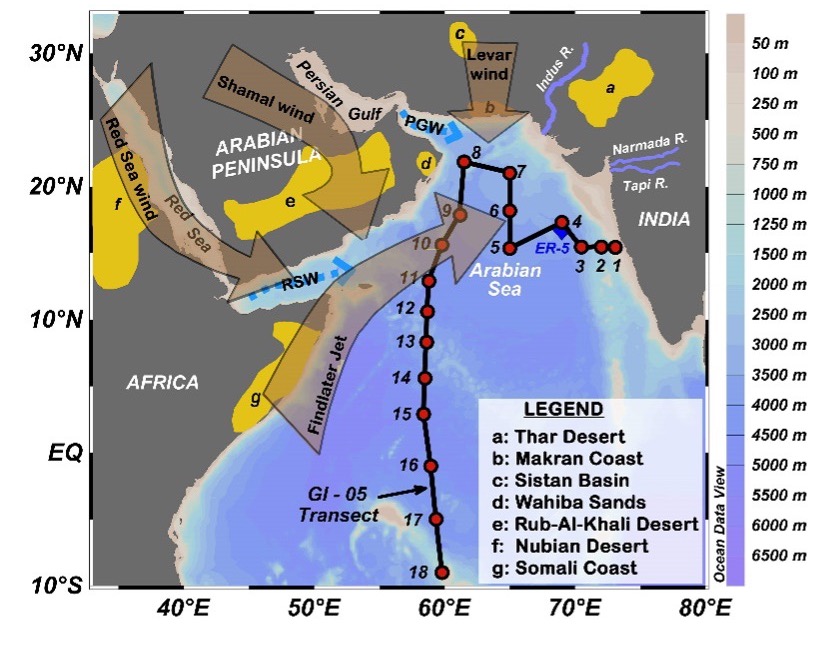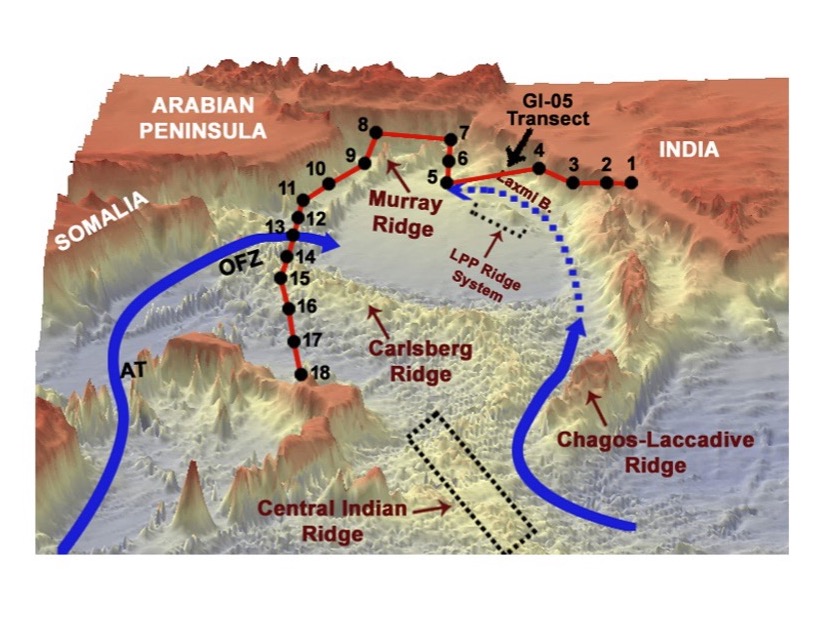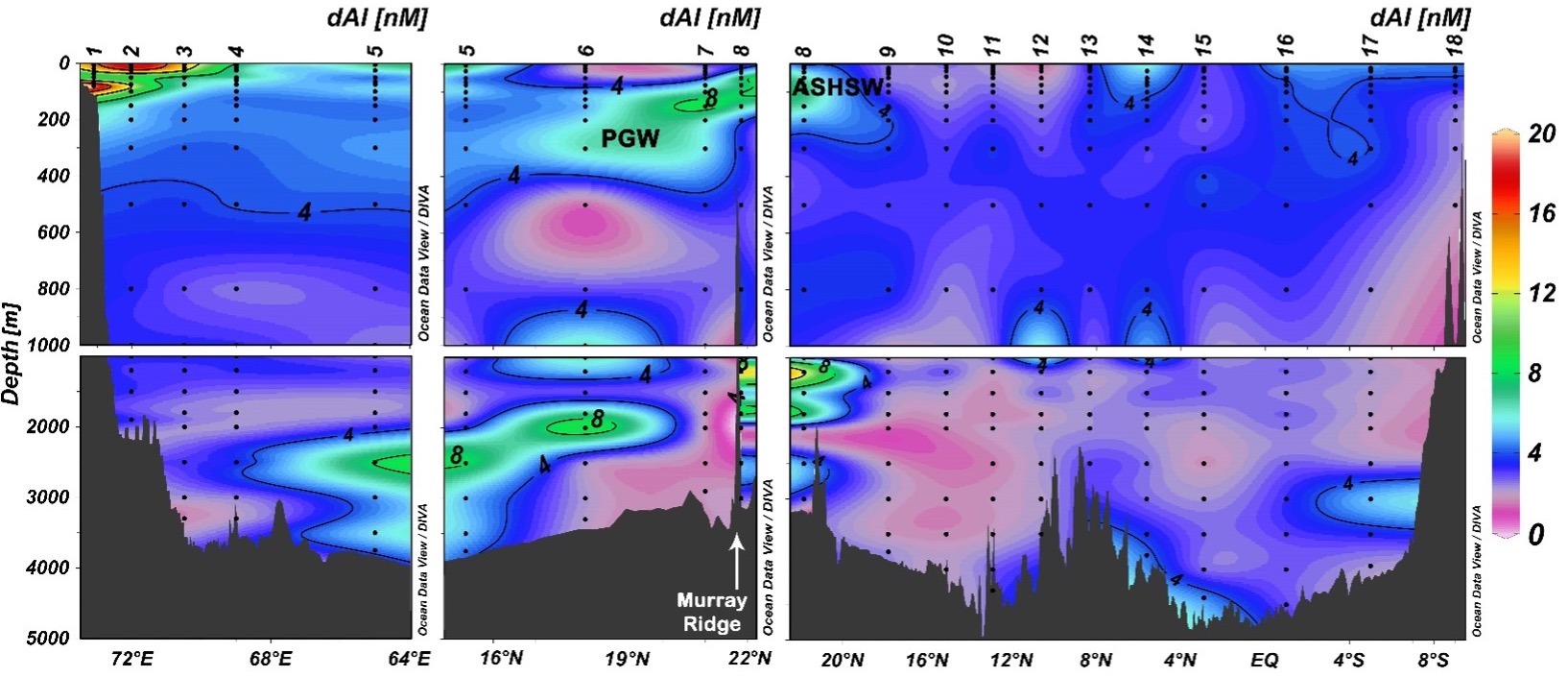Insight on the aluminium cycling during the inter-monsoon period in the Arabian Sea and Equatorial Indian Ocean
Full vertical water column profiles were established by Singh and Singh (2022, see reference below) along the GEOTRACES-India transect, GI05, in the Arabian Sea and the Western Equatorial Indian Ocean (W-Eq. IO) during the fall inter-monsoon period (August, September and October 2015). This detailed study of the aluminium (Al) sources and fate in this area reveals that:
- A strong east-west gradient characterizes the surface dissolved Al (dAl) distribution which is elevated (up to 21.6 nM) close to the Indian coastal region and low (1.5–3.6 nM) along the western boundary of the Arabian Sea. The high productivity of the western coast which is leading to the rapid removal of the surface dAl together with a decrease of the dust inputs during the interseason explains this gradient.
- More puzzling for the application of dAl as a tracer of dust inputs, surface water advection in the Arabian Sea is transporting the mixed layer dAl away from the input location, this transport lying between 190% and 300% of the dust-supported dAl input. These advected waters likely explain enrichments observed more south, in the equatorial part of the section.
- Deeper in the water column (>1000 m), the bottom topography allows identifying sources of dAl: in the area ambient to the Murray Ridge, the authors identify deep dAl and dFe enrichment likely reflecting release from the resuspended clay minerals deposited on the ridge. Even deeper (2000–2500 m) dAl maxima observed in the central Arabian Sea is hypothesized to be resulting from the deep-water interaction with the sediments over the nearby Laxmi-Panikkar-Palitana (LPP) ridge system.
In other words, surface and deep dissolved Al distributions reflect a complex interplay between different sources and forcing in this area.



Figure: Dissolved aluminium (Al) distribution in the Arabian Sea (AS) and the Western Equatorial Indian Ocean (W-Eq.IO) during the fall-intermonsoon (September-October). Schematic representations of the major wind systems and deep water (> 2000 m) circulation in the study area are also shown. Rapid dAl removal induced by high primary productivity in the western AS and a decrease in atmospheric dust deposition during the fall inter-monsoon results in a strong east-west gradient in surface dAl concentrations in the Arabian Sea. In the thermocline water depths (75–300 m), the intrusions of high salinity water masses, namely the Persian Gulf Water (PGW) and the Arabian Sea High Salinity Water (ASHSW), carry their dAl-rich signals from the formation regions to the open Arabian Sea. Deep water dAl enrichment near the Murray Ridge and the Laxmi-Panikkar-Palitana ridge system indicates Al release (particle dissolution of clay minerals or Al desorption) due to deep water interaction with the ridge sediments.
Reference:
Singh, N. D., & Singh, S. K. (2022). Distribution and cycling of dissolved aluminium in the Arabian Sea and the Western Equatorial Indian Ocean. Marine Chemistry, 243, 104122. doi:10.1016/j.marchem.2022.104122
